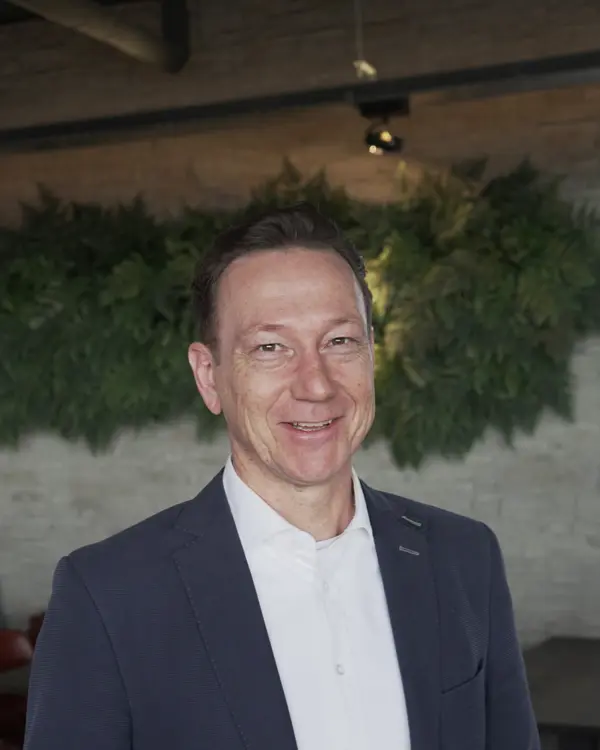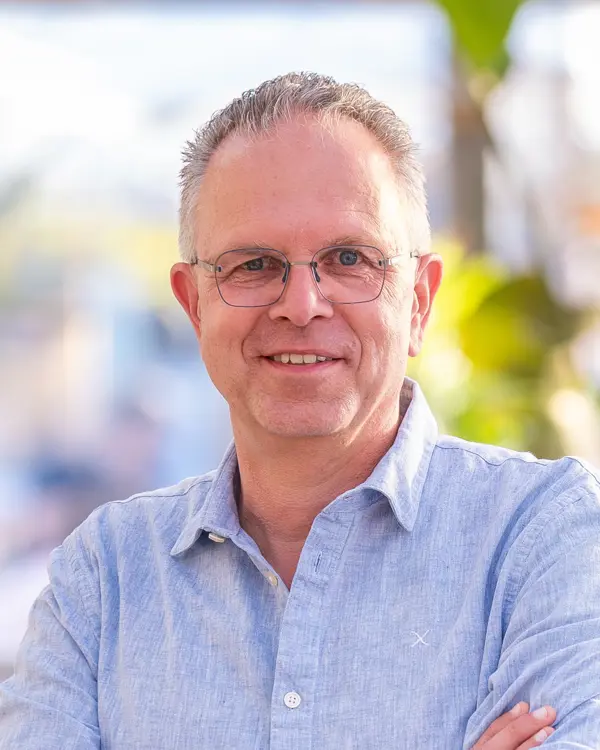50 years of Microsoft: technology as a path, not a destination
Microsoft is 50 years old. How did HSO grow along with it?
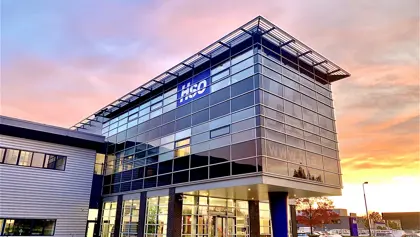
Microsoft is 50 years old. How did HSO grow along with it?
Microsoft is 50 years old. What began in 1975 with two boys in a garage with a BASIC compiler has grown into a technology giant that influences our way of working, communicating, and organizing every day. But how did Microsoft achieve its position as a leader? And how did HSO grow along with it?
Peter J. ter Maaten founded HSO in 1987 with a clear mission: "From day one, we wanted to use technology to improve our customers' business results." At that time, many companies were still dealing with paper processes. Digitizing those processes meant enormous progress. This approach aligned well with Microsoft's vision at the time: a computer on every desk. From day one, the companies shared a belief: technology is a means, not an end.
From Baan to Microsoft
In the 1990s, HSO mainly worked with ERP solutions from the Dutch company Baan, which was a major player in business software at the time. "We were then for Baan what we are now for Microsoft," says ter Maaten. Around 2002, there was a turning point when Baan fell away as a future-proof technology partner. HSO had to look for a new strategic partner.
"Microsoft was mainly a consumer company at the time, known for Windows and Office. They had hardly any foothold in business applications," ter Maaten recalls. "But when they acquired Great Plains and Navision, we saw the potential. Microsoft already had a large reach and deep pockets to invest seriously. We suspected they would become big in business applications."
That decision turned out to be excellent. Microsoft made great strides in the business market, and HSO grew along with it. Between 2003 and 2005, HSO fully switched to the Microsoft stack. "In hindsight, that choice has been the best in our existence," says ter Maaten.
Object-Oriented Technology
The switch to Microsoft was not only strategic. It was also about the advanced technology. "Dynamics AX, then known as Axapta, was fully based on object-oriented technology. That was a huge step forward. It was more flexible and scalable, allowing us to help customers grow better."
Meanwhile, the relationship with Microsoft became closer. HSO became part of Microsoft's Inner Circle. "As an Inner Circle partner, you often get insight into plans and developments 6 to 12 months earlier. This allows us to anticipate quickly and stay ahead with new technologies," says ter Maaten.
Following Microsoft's course is not always the easy way. "Sometimes it felt like we were falling into a ravine with customers when Microsoft made major strategic changes," Peter recalls. Nevertheless, HSO always chooses the pioneering role: "If you wait, you're too late. We want to lead, even if it means taking risks."
Transition to the Cloud
The transition to the cloud was a crucial turning point in the history of both Microsoft and HSO. "Microsoft was not the first; Amazon and Google stepped in earlier," ter Maaten explains. Nevertheless, Microsoft managed to quickly take a leading position with Azure. "Once Microsoft decided 'we're going for the cloud,' they fully invested in it with enormous resources. They had the financial power and market strength to overtake competitors." For HSO, this shift meant not only technological change but also a completely new way of supporting customers. "We helped our customers move from traditional on-premise environments to the cloud."
New Shift: AI
AI marks a new phase. For the first time, Microsoft is truly a leader. "With their investment in OpenAI, they were a leader in a completely new domain from day one. We had not seen this before," says ter Maaten enthusiastically. According to him, AI is not just a new technique but a fundamental change, comparable to previous leaps such as the introduction of object-oriented software, the internet, and the transition to the cloud.
"Every time there was a platform shift in technology, it gave us an acceleration in growth – in revenue, in everything," says ter Maaten. "And that's not just because Microsoft is moving, but also because we move early each time. This allows us to seize the opportunity to accelerate."
According to him, AI is the next step. "We see completely new functional areas emerging where we previously had no role," he explains. "For example: an agent that automatically goes through contracts, identifies price increases, and implements them in the system. This is a process that was previously done manually by three people – now it is a service where we actively add value." However, according to ter Maaten, it remains essential to be proactive: "We don't yet know exactly how AI will develop, but we know we don't want to stand on the sidelines. We choose action again, not waiting."
Clear Synergy
For both Microsoft and HSO, the focus is still on the customer and user. "Technology will always be our means, never the goal. Our strength lies in connecting technological innovation with real business improvement. We are here to help companies improve their business results," says Peter. "Like Microsoft, we believe that technology is only valuable if it truly helps people and organizations move forward."
In 2025, the shared belief between HSO and Microsoft is still the same. And the synergy between HSO and Microsoft is also crystal clear: where Microsoft develops and rolls out technology, HSO helps companies make the most of that technology.
Peter van Haaften:
"We didn't even know how to spell cloud"
Peter van Haaften (Engagement Director HSO International) still remembers how it went when HSO switched to cloud technology. "When I joined, we had literally never done anything with Azure. We had nothing with Microsoft 365, no idea about cloud licenses. There was actually no one within HSO who could even spell the word 'cloud.'"
Nevertheless, HSO fully embraced the new possibilities. "It was pioneering. We had to literally sell our first Azure projects while we still had no specialists in-house. Customers were suddenly forced to accept automatic updates. Some even said this meant the end of our company. But customers were actually enthusiastic. And ultimately, this step led to enormous growth and innovation. We went from locally hosted software to integrated cloud platforms that form the basis for everything we do now with AI and data processing. In hindsight, it was logical, but at the time, it was incredibly exciting."
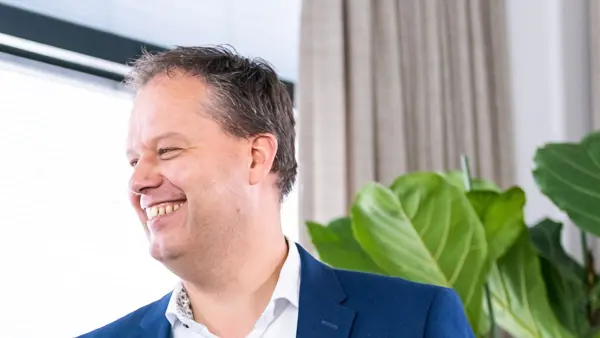
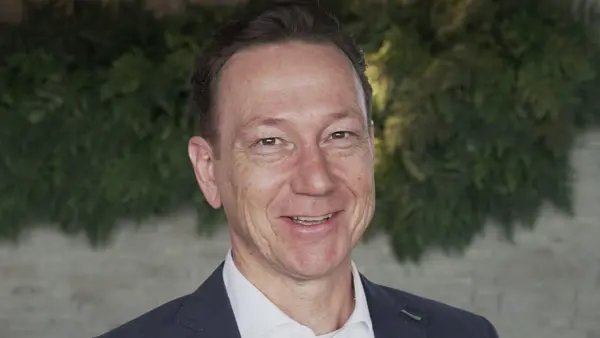
Ronald Otten:
"If Microsoft turns left, we also turn left"
When Ronald Otten (Director Sales & Marketing HSO International) joined HSO in 2004, the company had just changed course: Baan had collapsed, and HSO fully embraced Microsoft. "Peter J. ter Maaten saw the power of Axapta – recognizable, flexible, and with that familiar Office look. It felt like a logical new direction." From that moment on, HSO moved in sync with Microsoft. "We started with ERP, but grew step by step: CRM, Data, Azure, AI, everything. Microsoft sets the direction, and we follow it."
That strategy sometimes requires courage. "We had once built our own service solution. When Microsoft introduced Field Service, we embraced it and expanded our own solution based on the Microsoft Field Service solution. We don't want to compete with our partner, but rather strengthen each other. This adds value to their ecosystem and not just our own island. According to Otten, it is precisely this deliberate connection that is the strength of the partnership. "Microsoft innovates with unprecedented speed and scale. We ensure that customers can really do something with it. If they turn left, we also turn left. No doubt, just go."
Marcel Kroon:
From 15 days to 15 minutes
Marcel Kroon (Director Professional Services Industry) joined HSO in 2003, shortly after the company decided to get on the Microsoft train. Before that, he, like many colleagues, worked with Baan software. "That software was complex at the time, installations took many days. You could easily spend 15 days getting everything up and running." The switch to Axapta 3.0 (the predecessor of Dynamics F&O) felt like a culture shock. "Within 15 minutes, it was on your laptop. Those were special times. We thought: this is going to change the world of business applications."
That change came. Microsoft made business application software more accessible, user-friendly, and fully integrated with Office. "Suddenly, you could bring data from ERP to Excel with a right-click and read it back in. Microsoft brought two worlds together. That was revolutionary at the time." For HSO, it marked the start of a new era. "We went from complex, cumbersome software to a platform where speed, integration, and ease of use were central. It gave us the wind in our sails and made it possible to grow quickly."
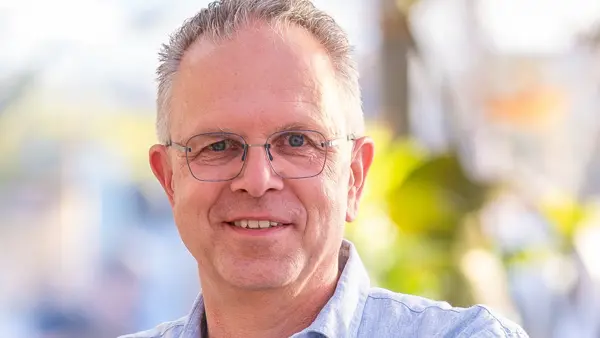
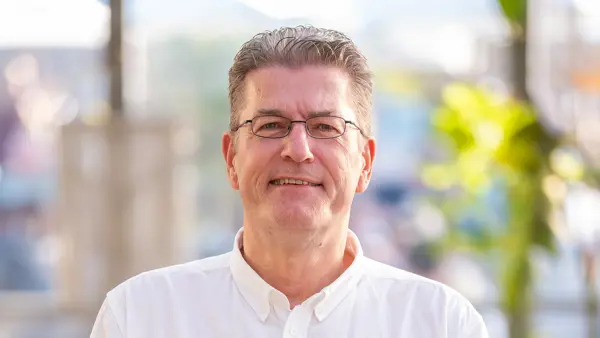
Berry Steinfort:
From 'pure-play ERP' to full-stack Microsoft partner
Berry Steinfort (Senior Sales Manager) has been working at HSO since 2003 and witnessed the transition to Microsoft ERP technology up close. "We were still a pure-play ERP player at the time," he says. "But now we offer the entire Microsoft platform – from ERP to AI."
Berry distinguishes four growth phases in HSO's development. "We grew big with ERP. Then came CRM, with the acquisition of @Work as a turning point – it doubled our CE capacity. Next, we fully embraced data and cloud, with the acquisition of Motion10 as a catalyst. And now we are making the step to AI, with Aware Group as the latest addition."
The common thread? Following where Microsoft innovates and ensuring that customers can really get to work with it. "Sometimes we build ourselves, sometimes we acquire – but always with the Microsoft platform as the starting point. That makes us recognizable, for customers and colleagues. Whether you work with ERP, data, CE, cloud, or AI – you are part of one story that makes sense."


